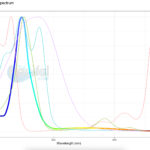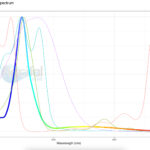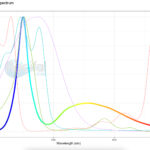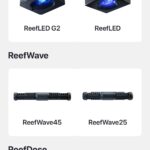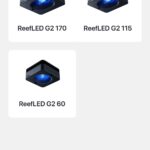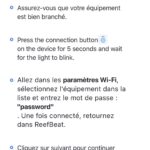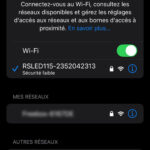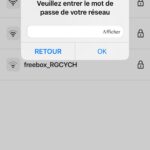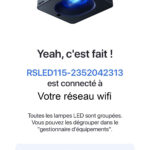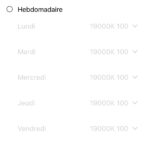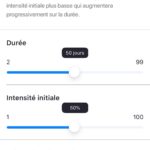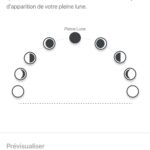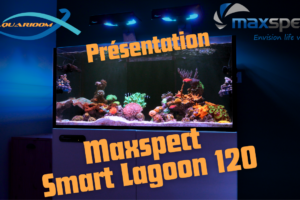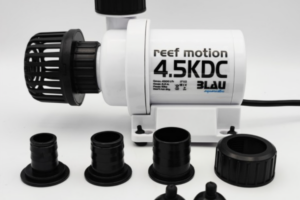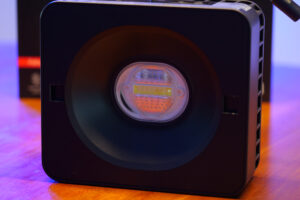Red Sea ReefLED G2 115 : Full review
Released a few months ago, we got a Red Sea ReefLED G2 115 to review.
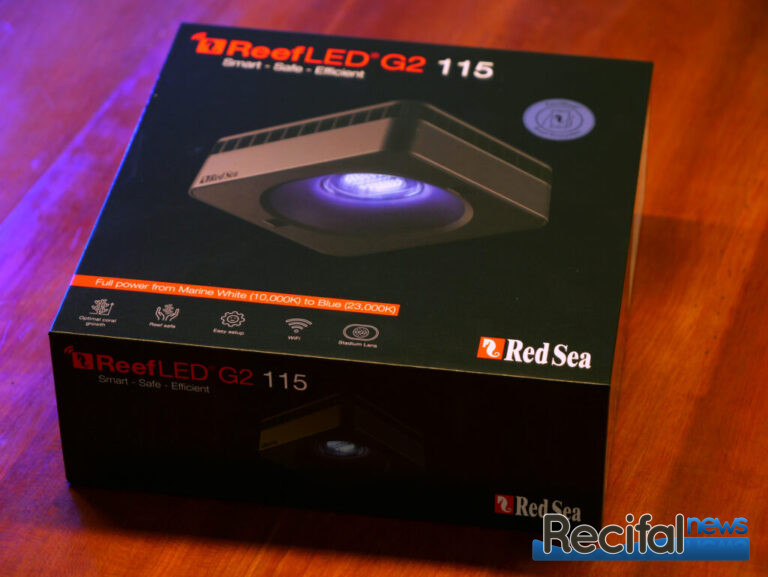
Overview
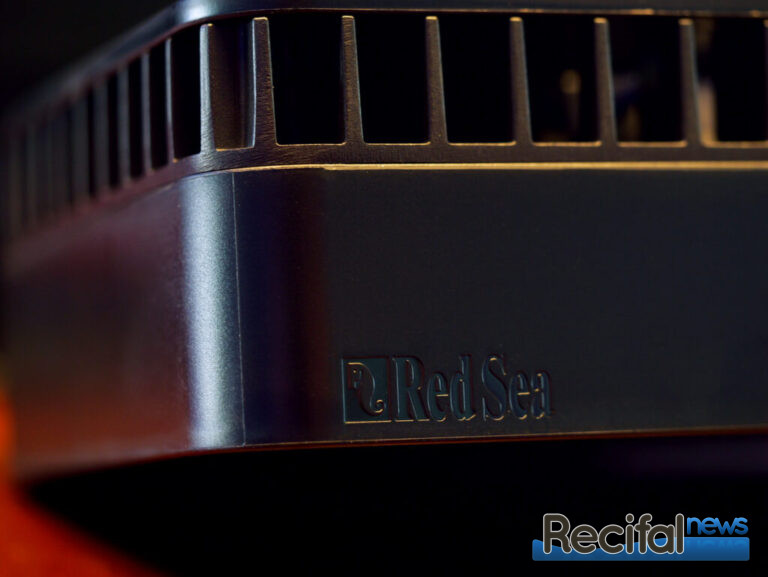
Concerning their design, the main change is the rounded corners. It still has black rectangular body with top cover to hide the cooling fan.
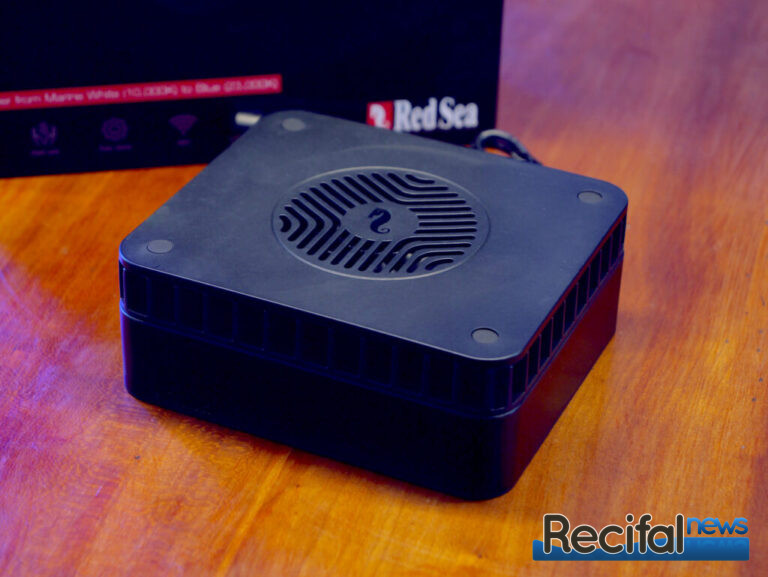
LEDs are aggregated into a central ovoid-shaped cluster. It is slightly recessed into the fixture body and it is highly appreciated : it avoids direct light into your eyes when you look at the tank. An optional visor enhances this protection for your eyes.
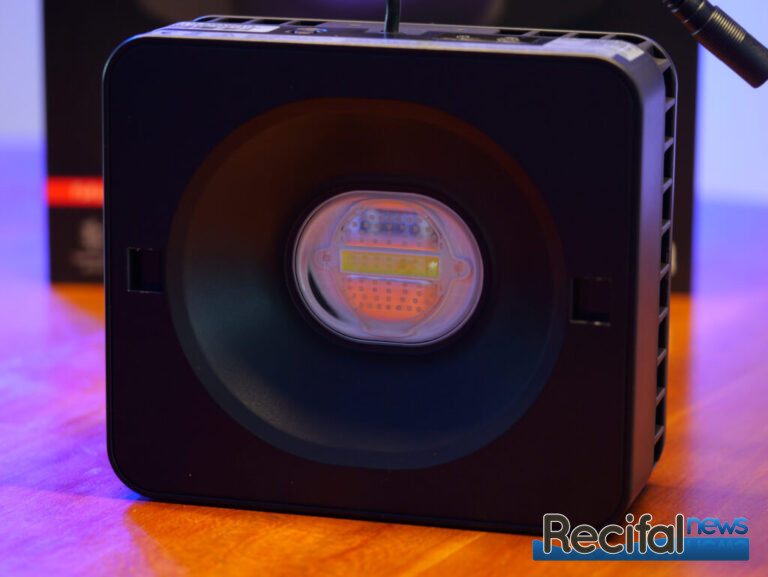
Mounting solutions
Red Sea offer three optional mounting systems :
- Mounting arm to the tank glass
- Hanging kit
- Pendant for several ReefLED. 4 models available for 75 to 180 cm tanks
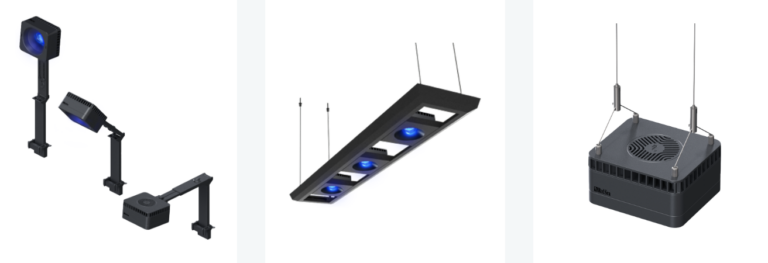
Optics

As LEDs form an unique central ovoid cluster, a big optic lenses covers it all. It allows the spread of the whole power of the fixture from a central point. It has 3 main effects :
- The mix of colours is insured by the proximity of the different LEDs colours.
- The power is concentrated and it allows high PAR values under the fixture.
- Shimmering effect is high : you will observe water surface waves on your reef.
LED composition
LED composition is not really announced but this new generation has improved UV, violet and blue domain. It is called « Reef-Spec » Blue. A white channel is also present.
This leads to the several spectrawe measured :
- With 19 000 Kelvin setup (we recommend it according to trials on our testing tank), at full power :
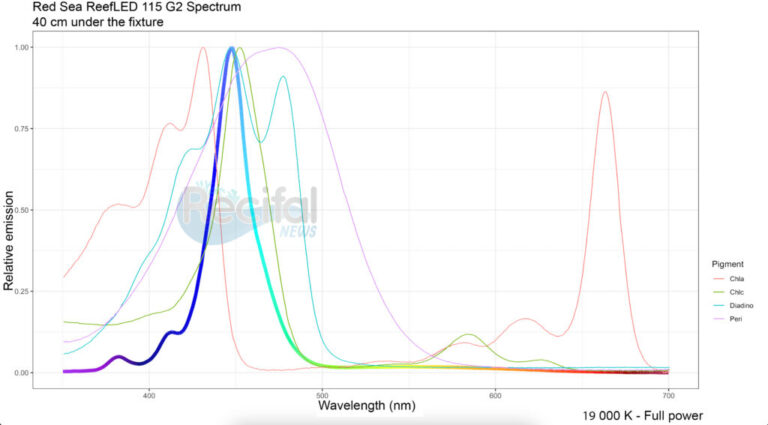
- With 23 000 Kelvin setup at 100% power :
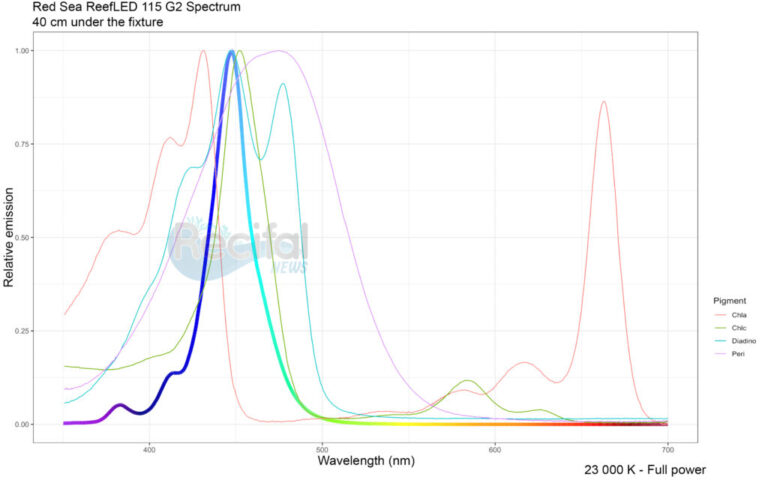
- To go further, we measured spectrum at 8000,12000 and 15000K for hobbyists who prefer warmer light :
We observe with 19000 and 23000 Kelvin setups that emission spikes match the absorption spikes of chlorophylls a and c. White LEDs complete the spectrum.
PAR measurements
After assessing the light spectrum, we measured intensity of light that is beneficial for coral growth, specifically using PAR (more accurately referred to as PPFD). The intensity is measured in micro-moles of photons per square meter per second (µmol photons/m²/sec).
Measurement Conditions: Intensity was recorded with all channels set to 100% power (shown in the first three plots) as well as under a program we typically use for a mixed reef tank (shown in the last three plots).
Depth Measurements: Measurements were conducted at depths of 20, 40, and 60 cm under the fixture.
Measurement Area: An area of 70 x 60 cm was used for the intensity measurements.
Measurement Environment: Measurements were taken in open air, as the light reflection on the water surface can vary significantly depending on water flow.
Results : Here are the main observations we can have. All PAR measurements are shown in the plots below for more details.
- 19000K – Full power : We measure higher than 800 PAR values at 20 com under the fixture. 300 PAR Values are measurable on almots 40 x 40 cm area.At 40 cm from the fixture, PAR is higher than 200 on a 30×30 cm approximatively. Almost the whole testing area shows >100 PAR values. And 60 cm under the fixture, we measured >100 PAR on 60 x 40 cm.
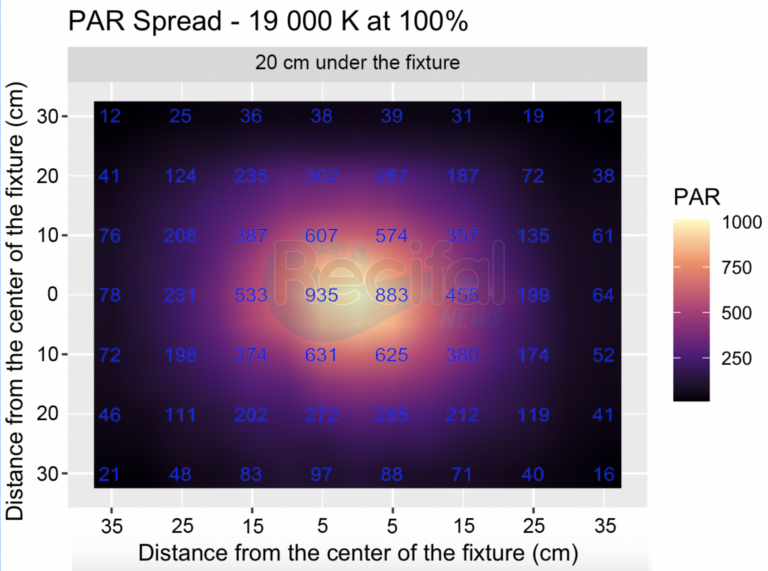
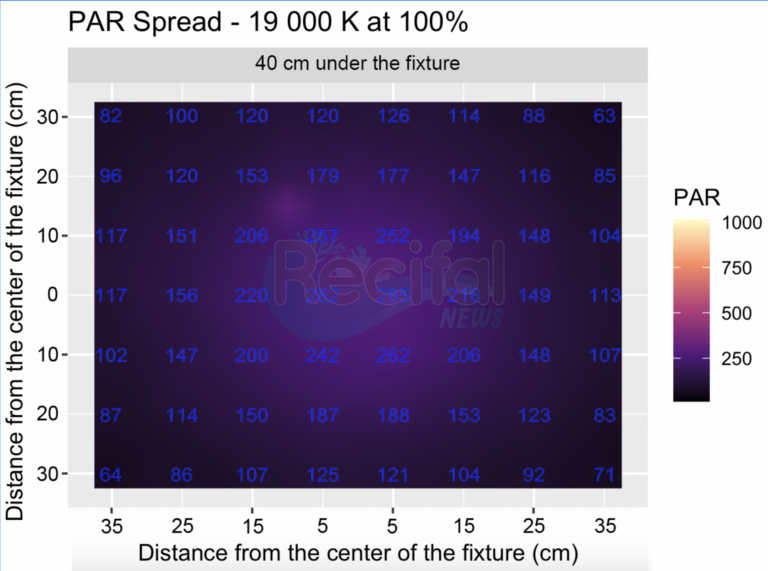

- 23000K – full power : values are very similar. It enlightens the Red Sea argument : total power stays high even with white LEDs OFF. So PAR values are around 900 at 20 cm right under the fixture, and PAR values are higher than 300 on 50 x 40 area cm. 40 cm below the ReefLED G2 155, PAR is higher than 100 on almost the whole testing area. And at 60 cm, this 100+ PAR area is reduced to 50 x 40 cm.
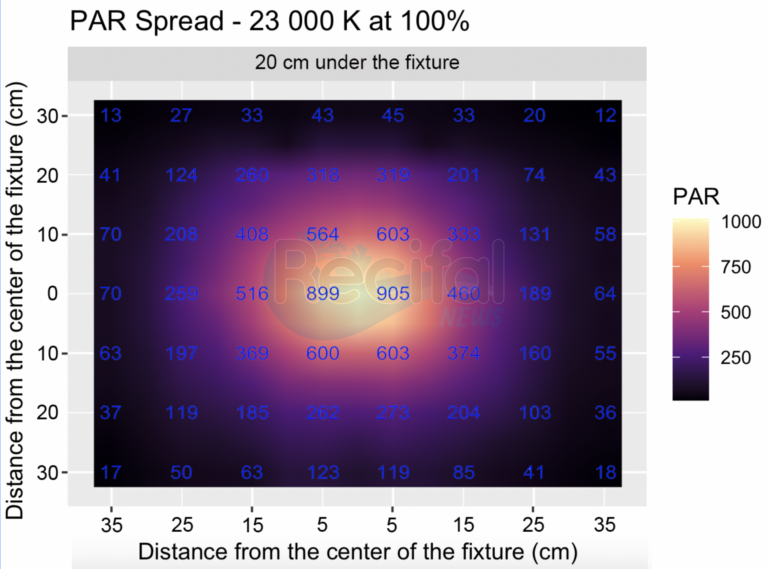
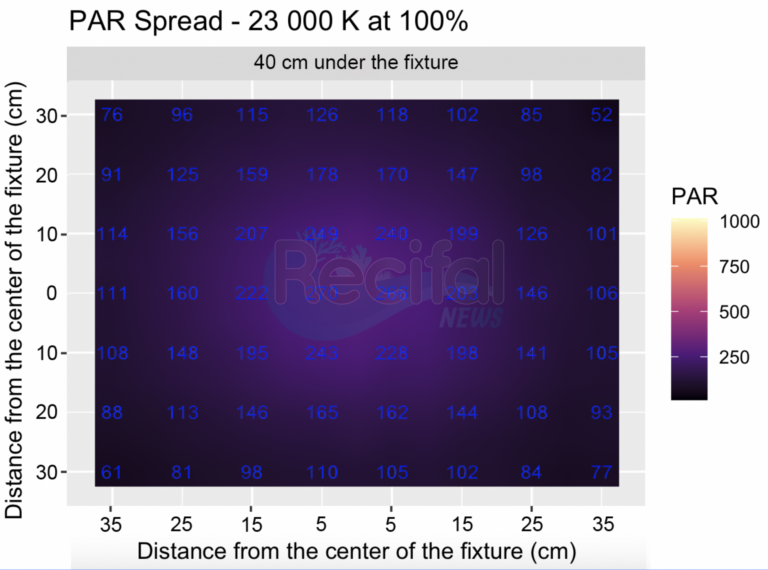
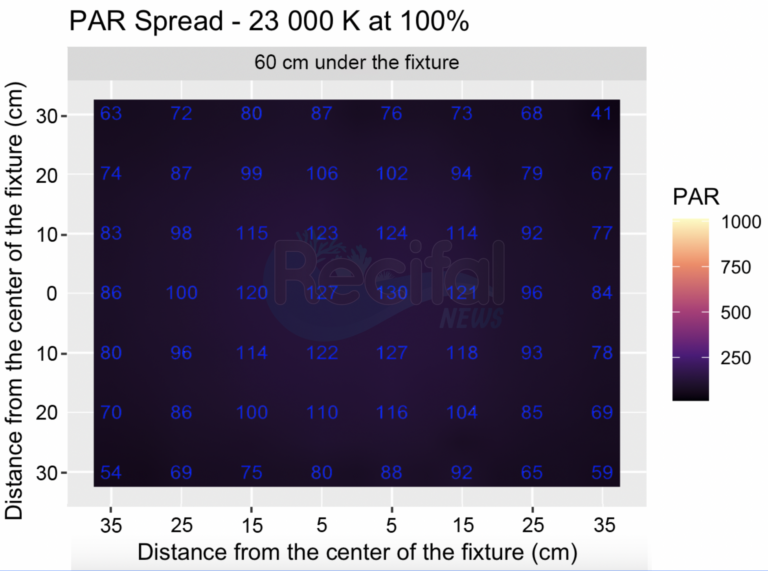
Heatsink
More technical details
Whether it is set on 19000 or 23 000K up, the electric consumption is around 110W, so close to the 115 of the reference of the product. Power factor, the electrical efficiency, is 0,94 : it can be translated as « 94 % of the energy consumption is efficiently used ».

Reefbeat App

Once the fixture is plugged on, you can easily connect it to your smartphone thanks to Reefbeat app. It only needs a few steps :
- Add a device : chose the kind of device you add
- The « connectivity » red light behind the fixture must blink. If it is not the case, push the black button on the left of the cable during 5 sec.
- Connect your smartphone to the ReefLED wifi network (password is « password »).
- Chose your home wifi network and add the password.
That’s it ! Your ReefLED is now connected to your Reefbeat environment. You can now make a first easy setup by choosing the colour temperature between 8 and 23 000K and sunrise time. You will be able to adjust it later.
With these basics setup, the light goes on on 1h period, is in full intensity mode during 11h and switches off slowly during 1h. And then a 3h lunar light period completes the program.
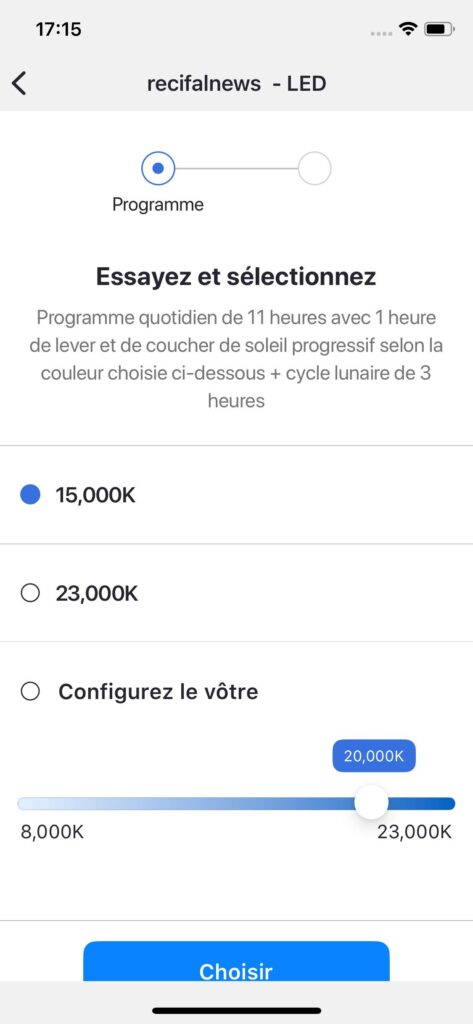
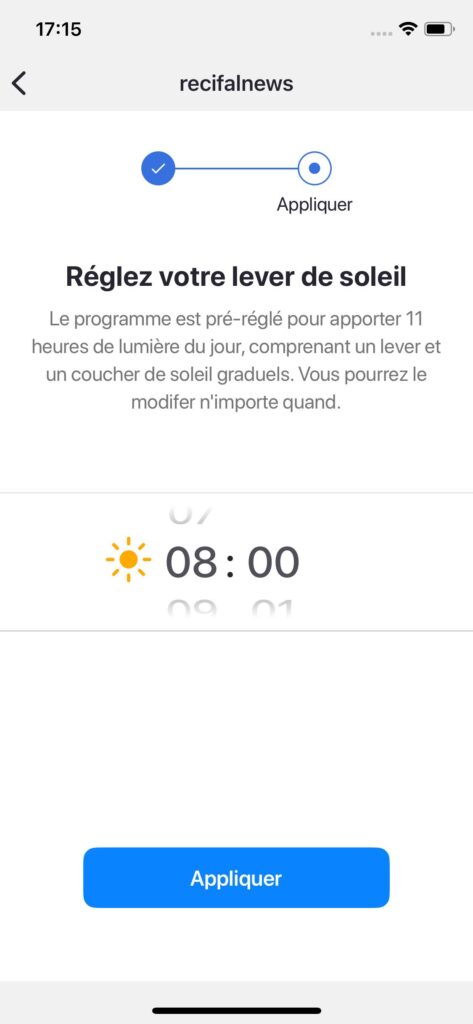
The homepage gives you an overview of the actual state of the light : color temperature, intensity and moonlight, running effects (acclimatation, clouds, moonlight), connectivity, and a quick action button to activate the photography mode.
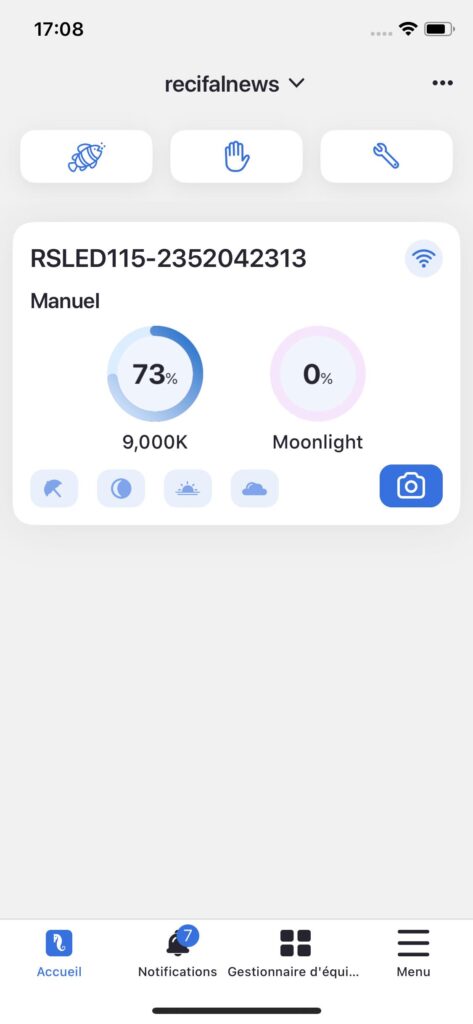
By clicking on the device, you will land on a page showing the program plot, and below, several features :
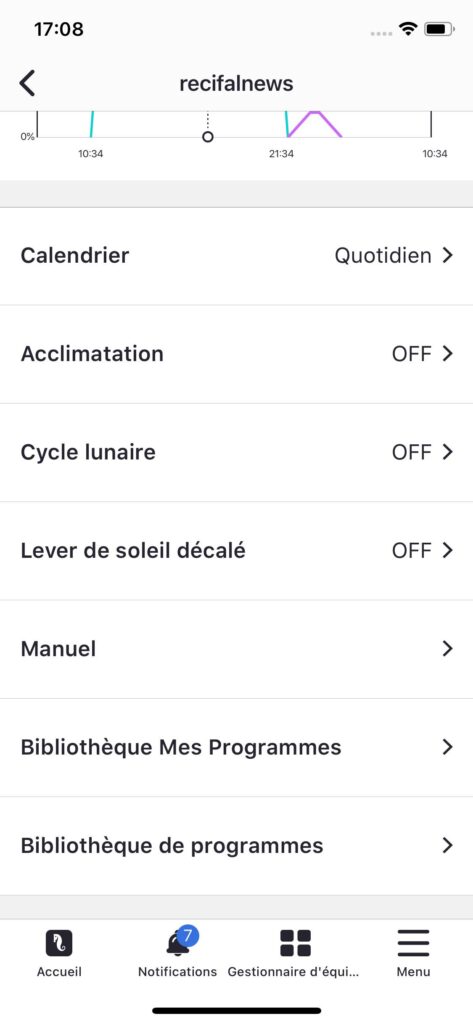
- Calendar : chose between setting up the same program everyday, or you can change the light for each day.
- Acclimatation : dim the light of a chosen percentage, during a chosen perido until the light reaches the whole power of you program.
- Lunar mode : setup a whole 28 days lunar light cycle instead of a constant lunar light everyday.
- Delayed Sunrise : delay the sunrise time between several lights on a tank
- Manual : setup manually the light for a certain period
- Programs library : find your personal and pre-registered programs
To edit a program, push the pencil button above the program plot, then the pencil on the left time period you want to change. You can then choose timing, colour temperature and intensity.
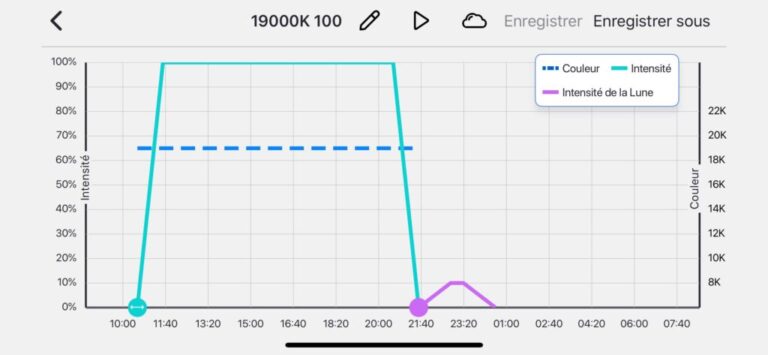
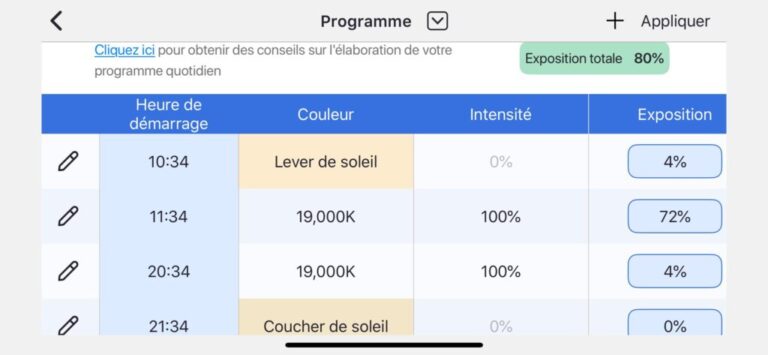
Here appears one nice feature of ReefLED G2. Thanks to their experience, Red Sea establish standards corals light needs. They integrated their knowledges into the application. To avoid corals light surexposition, each time period of your program has an exposition percentage of the maximal recommended exposition. It takes into account the light temperature, the intensity and the duration. You can then know if your program exceeds recommended daily light exposition, or if you can optimise it.
Recifal News feedback
We enjoy :
- the simplicity of setup and use
- the glare shield with LEDs slightly recessed into the fixture body
- corals coloration and fluorescence under 22-23 000 K setup
- Red Sea expertise with daily light intensity advice
We regret :
- the pinkish glare with <19 000K setup
General information
PAR and spectrum measurements were conducted using a spectroradiometer with a range of 190 to 850 nm and a resolution of 0.5 nm. Heatsink measurements were taken with a FLIR thermal camera, and electrical features were evaluated using a power consumption socket.
By Axel, Marine Biology Master – Principles and Management of Marine Ecosystem Functioning – Lille University – Specialization in Photosynthesis, Light, and Phytoplankton.

